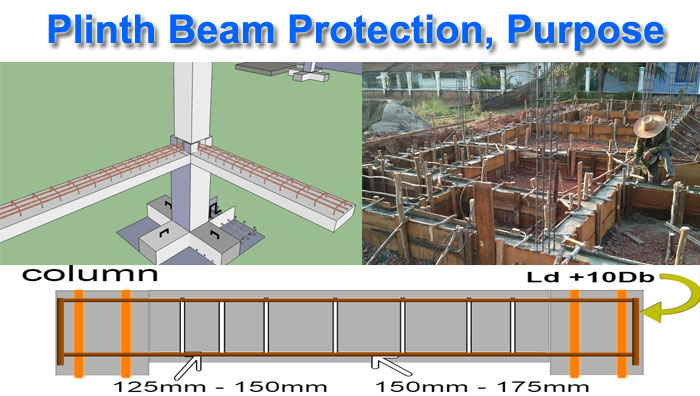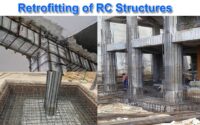Plinth Beam Protection | Plinth Beam Purpose
A plinth is a support base or platform for a plinth, column, or construction. In terms of structure, the plinth distributes weight and pressure uniformly throughout a column over a larger area.
Structures can also be elevated above ground to protect them from water and other hazards.
What Is the Plinth’s Height?
The plinth’s height from the ground is between 300 and 450 mm. A minimum baseboard height of 150 mm is advised when working from a natural level.
What is the Function of a Plinth Beam in a Building?
The plinth beam connects the wall to its foundation with a reinforced concrete beam. When the foundation suffers from laying, the plinth beam is used to prevent the extension or cracking of foundation cracks in the wall above.
The load from the wall is evenly distributed over the foundation by plinth beams.
The plinth beam is the first beam built after the foundation in a skeletal system, which is another name for a framed building.
The ground floor finish level is kept above ground level by filling the empty space and voids with compacted dirt to create a sturdy base on which to build the floor.

Applications for Plinth Beams
In earthquake-prone places, providing a Purpose radius is required.
Another application of this sort of beam is the plinth board beam, which is built above natural dirt.
Concrete Strength Appropriate for Plinth Beam Construction
The plinth board beam’s concrete strength must be at least 20 MPa.
If the concrete is mixed by hand, it will be essential to add an additional 20% cement to the mix.
Plinth Beam Minimum Dimensions
The plinth beam must have a minimum depth of 20 cm and breadth that matches the foundation’s final stroke.
For the Plinth Beam, there will be formwork.
Before pouring the concrete, the formwork for the plinth beams must be carefully installed and attached, as seen in the photo below. To protect steel bars from harsh elements, the concrete must be sufficiently compressed.
Plinth Beams are made of steel bars.
At the bottom of the beam, two bars with a minimum diameter of 12 mm are recommended. At the top of the plinth beam, two bars with a minimum diameter of 10 mm must also be installed.
A 25 mm concrete cover is required to protect the reinforcement bars. The diameter of the stirrups must be at least 6 mm, and the spacing must be at least 15 cm.
What Is Plinth Protection and How Does It Work?
Direct water entering the soil close to the plinth wall is reduced by plinth protection. In other terms, plinth protection refers to the region surrounding the building.
Plinth protection is commonly achieved by pouring a 75–100 mm layer of plain cement concrete along the building’s border.
The plinth must be protected to prevent/reduce water infiltration through capillary action from reaching the plinth wall and reaching the floor level.
The plinth beam protection prevents water from entering the ground directly at the plinth board wall.
The region around the structure is referred to as plinth protection in technical terminology. Typically, a layer of around 100 mm of ordinary cement concrete is poured along the building’s edge to protect the plinth.




